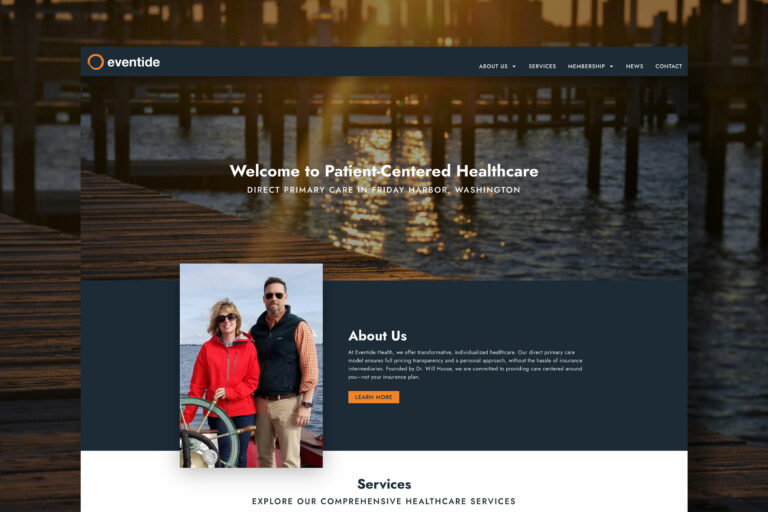Ah, creativity! That elusive, mercurial force that makes the world a more vibrant and innovative place. But we all know the creative process can be a fickle beast. In this article, we’ll explore why it’s hard to be creative on-demand and delve into the factors that often hold us back from achieving our full creative potential. So, buckle up and get ready to uncover the mysteries of the creative mind.
The Pressure Cooker of Creativity
Deadlines and Stress: Creativity’s Kryptonite
Let’s face it – nothing kills creativity faster than a looming deadline. When under pressure, our brains prioritize efficiency and logic over imagination. So, it’s no wonder the creative juices tend to dry up when we need them the most. It’s a classic case of the “blank page syndrome.”
The Science Behind Stress and Creativity
When stressed, our bodies release cortisol, which helps us respond to threatening situations. While this “fight or flight” response can be helpful in certain circumstances, it can also hinder our ability to think creatively. High cortisol levels can reduce cognitive flexibility, making it challenging to develop innovative solutions or see things differently.
The Curse of Perfectionism
Another factor contributing to the creative struggle under deadlines and stress is perfectionism. When we’re under pressure to produce something exceptional, we may become overly critical of our work. This self-scrutiny can lead to endless self-doubt and procrastination, ultimately stifling our creative output.
Strategies to Combat Deadline-Induced Creative Blocks
While deadlines and stress may be an inevitable part of modern life, some strategies can help you keep your creative spark alive even under pressure:
- Prioritize self-care: Ensure you get enough sleep, eat well, and exercise regularly. These habits can help counteract the negative effects of stress on creativity.
- Embrace imperfection: Permit yourself to create “bad” or “imperfect” work. This can help reduce the pressure to produce something extraordinary and allow your creativity to flow more freely.
- Practice mindfulness: Techniques like meditation and deep breathing can help you stay focused and present, making tapping into your creative instincts easier even when deadlines loom.
- Break tasks into smaller steps: Instead of tackling a massive creative project all at once, break it down into smaller, more manageable tasks. This can help you feel less overwhelmed and make it easier to maintain your creative momentum.
- Set realistic goals: It’s essential to set achievable goals for yourself when working on a creative project. Unrealistic expectations can lead to unnecessary stress and hinder your creative process.
The Paradox of Choice: When More is Less for Creativity
You’d think having more options would make it easier to be creative, right? Well, not exactly. Research shows we can become paralyzed by indecision when faced with too many choices. This phenomenon, “analysis paralysis,” can stifle our creative impulses and leave us spinning.
Choice Overload: A Double-Edged Sword
While having a variety of choices can be beneficial, it can also lead to cognitive overload. Our brains have limited processing capacity, and when faced with an abundance of options, we may struggle to make decisions or take action. Consequently, our creative energy can be drained, leaving us feeling overwhelmed and unproductive.
How the Paradox of Choice Affects the Creative Process
The paradox of choice can impact the creative process in several ways:
- Fear of making the wrong choice: When presented with numerous options, we may become anxious about making a suboptimal decision. This fear can inhibit our willingness to take risks and explore new ideas, hampering our creative potential.
- Decision fatigue: Continuously weighing the pros and cons of multiple choices can lead to decision fatigue. As our mental energy depletes, our ability to think creatively and make effective choices diminishes.
- Reduced satisfaction with choices: When faced with a plethora of options, we’re more likely to second-guess ourselves and feel less satisfied with our final choice, even if it’s a good one. This dissatisfaction can dampen our enthusiasm for the creative process and hinder our progress.
Tips for Overcoming the Paradox of Choice in Creative Endeavors
To prevent the paradox of choice from stalling your creativity, consider the following strategies:
- Limit your options: Instead of considering every possible choice, narrow your options to a manageable few. Reducing the number of alternatives can alleviate decision fatigue and free up mental energy for creativity.
- Set constraints: Establishing boundaries or limitations can help focus your creative energy and make the decision-making process more straightforward. Constraints can stimulate creativity by forcing you to think more innovatively within the defined parameters.
- Embrace imperfection: Accept that no choice will be perfect, and trade-offs will always exist. By embracing the inherent imperfections in any decision, you can reduce anxiety and remain more open to creative possibilities.
- Trust your intuition: Sometimes, relying on your gut instincts is helpful rather than overanalyzing every option. Intuition can be a powerful ally in the creative process, helping you make decisions more efficiently and confidently.
By incorporating these techniques into your creative practice, you can sidestep the pitfalls of the paradox of choice and unleash your full creative potential.
Tapping Into the Creative Well
The Power of Routine: Unlocking Creativity Through Habit and Structure
One of the reasons why it’s hard to be creative on demand is that creativity often thrives on routine. Many artists, writers, and musicians have daily rituals that help them tap into their creative flow. But when life gets hectic, it can be tough to carve out the time and space needed for these rituals.
The Science of Habits and Creativity
Our brains are wired to seek patterns and routines. When we engage in a routine, our brains can operate more efficiently, freeing up cognitive resources for other tasks. This efficiency allows us to tap into our creative reserves and facilitates a smoother creative process.
Famous Creative Routines
Throughout history, many famous creatives have relied on routines to fuel their work:
- Ernest Hemingway wrote every morning, standing at a typewriter, to maintain a consistent writing routine.
- Ludwig van Beethoven began each day with a cup of coffee, meticulously counting out 60 coffee beans to ensure the perfect brew.
- Frida Kahlo adhered to a strict daily painting schedule, allowing her to focus intently on her artistic expression.
These examples demonstrate how routines can provide a stable foundation for creative endeavors.
Establishing Your Own Creative Routine
Here are some tips for developing your own creative routine:
- Identify your most productive time of day: Determine when you feel most alert and energized. Schedule your creative work during this time to maximize your natural peak productivity.
- Create a dedicated workspace: Designate a specific area for your creative work. This space should be free of distractions and have the necessary tools and materials.
- Develop rituals: Establish simple rituals to signal the start and end of your creative sessions. These rituals can help create a sense of continuity and signal to your brain that it’s time to focus on creative tasks.
- Set achievable goals: Break your creative projects into smaller, manageable tasks. Setting attainable goals can help you maintain momentum and motivation.
- Be consistent: Aim to maintain your creative routine as consistently as possible. Consistency reinforces neural pathways in the brain and strengthens the connection between routine and creativity.
- Allow for flexibility: While maintaining a routine is essential, it’s also crucial to be flexible and adapt your routine when necessary. Life can be unpredictable, so be prepared to adjust your schedule and creative rituals as needed.
By implementing these strategies, you can harness the power of routine to nurture your creativity and increase your ability to be creative on demand. Embracing structure and habit can pave the way for a more productive and fulfilling creative journey.
The Importance of Play: Unlocking Creativity Through Fun and Exploration
As adults, we often forget the value of play in fostering creativity. Play helps us relax, explore new ideas, and take risks without fear of failure. But as we grow older, play often takes a backseat to more “serious” pursuits, making it harder to be creative on demand.
The Science of Play and Creativity
Play is a natural behavior that engages our brains in unique ways. When we play, our brains release dopamine, a neurotransmitter associated with pleasure, motivation, and learning. This release of dopamine creates a state of heightened engagement and curiosity, which can spark creativity and innovation.
Furthermore, play stimulates the growth of new neurons and strengthens neural connections, contributing to cognitive flexibility and creative problem-solving.
Types of Play That Boost Creativity
Several forms of play can help cultivate creativity in adults:
- Physical play: Physical activities like sports, dance, or yoga can help reduce stress, increase mental clarity, and promote creative thinking.
- Mental play: Activities like puzzles, riddles, and brain teasers challenge our cognitive abilities and encourage us to think differently.
- Social play: Collaborative games, improvisational theater, and group brainstorming sessions can help break down barriers, build trust, and stimulate creative synergy.
- Artistic play: Exploring various artistic mediums such as painting, sculpting, or writing can provide an outlet for self-expression and creative experimentation.
Integrating Play into Your Daily Life
To reap the creative benefits of play, consider incorporating playtime into your daily routine:
- Schedule regular play breaks: Set aside time each day for play, even if it’s just for a few minutes. Consistent play breaks can help reduce stress and recharge your creative batteries.
- Find playmates: Engage with friends, family members, or colleagues in playful activities. Sharing play experiences can help foster creativity through collaboration and social interaction.
- Embrace curiosity: Approach your daily life with a playful, curious mindset. Embrace the unknown, ask questions, and allow yourself to wonder and explore.
- Try new activities: Seek out new and unfamiliar forms of play to challenge your brain and expand your creative horizons.
By embracing and incorporating the power of play into your daily life, you can nurture your creative spirit and overcome the challenges of being creative on demand. Play allows us to connect with our inner child, permitting us to be imaginative, curious, and fearless in our creative pursuits.
Strategies to Overcome Creative Blocks: Reigniting Your Creative Spark
Creative blocks can be frustrating, especially when trying to be creative on demand. Fortunately, there are several strategies to help you overcome these hurdles and rekindle your creative fire:
1. Set Realistic Expectations
Putting excessive pressure on yourself to create something extraordinary can lead to stress and creative paralysis. Instead, set achievable goals that challenge you without overwhelming you. Remember that progress is often incremental; even small steps can contribute to your overall creative growth.
2. Break Tasks into Manageable Chunks
Tackling a complex creative project can be daunting, and the enormity of the task can contribute to creative blocks. Break the project into smaller, more manageable tasks you can complete individually. This approach can help alleviate anxiety and make it easier to maintain your creative momentum.
3. Allow for Downtime and Play
As mentioned earlier, play is essential for nurturing creativity. Additionally, downtime and relaxation allow your brain to recharge and process information. Schedule regular breaks and engage in activities that bring you joy, such as exercise, meditation, or hobbies. These activities can help you maintain a healthy balance and foster a creative mindset.
4. Seek Inspiration from Unexpected Sources
Sometimes, the best creative ideas come from unexpected places. Expose yourself to new experiences, environments, and perspectives to stimulate creative thinking. Attend lectures, visit museums, read books outside your usual genre, or converse with people from diverse backgrounds. Expanding your horizons can uncover fresh inspiration and spark new ideas.
5. Collaborate with Others
Collaborating with others can help you overcome creative blocks by providing new perspectives and ideas. Working with a partner or a team can introduce you to different ways of thinking and problem-solving, which can inspire your own creativity. Additionally, engaging in brainstorming sessions, group workshops, or feedback sessions can help you refine your ideas and overcome creative hurdles.
By employing these strategies, you can effectively tackle creative blocks and enhance your ability to be creative on demand. Remember, creativity is an ongoing process that requires patience, practice, and persistence. Embrace the journey, and trust that with the right tools and mindset, you can overcome any creative obstacles that come your way.
FAQs
Q: How can I overcome writer’s block or a creative slump?
A: Try taking a break, changing your environment, engaging in a different creative activity, or collaborating with someone else. The key is to be patient and permit yourself to experiment.
Q: Can anyone be creative, or is it a talent some people don’t have?
A: Everyone has the potential to be creative. While some individuals may be naturally more inclined towards creativity, it’s a skill that can be cultivated and developed over time.
Q: How can I encourage creativity in the workplace?
A: Create an environment encouraging risk-taking, collaboration, and open communication. Provide employees with opportunities to learn, grow, and develop their creative skills.
Q: Why is it important to be creative?
A: Creativity is essential for innovation and problem-solving. It allows us to think outside the box and develop new ideas, products, and solutions.
Closing Thoughts
In conclusion, being on-demand creative can be challenging but not impossible. You can tap into your creative potential even under pressure by understanding the factors that hinder creativity, such as stress, the paradox of choice, and lack of routine, and implementing strategies to overcome these obstacles. Embrace the power of play, establish routines, and seek inspiration from unexpected sources to fuel your creativity. Remember that creativity is a journey, and with patience, persistence, and a willingness to adapt, you can overcome any challenges that come your way. So go forth, unleash your creative spirit, and continue exploring your imagination’s boundless landscape.















